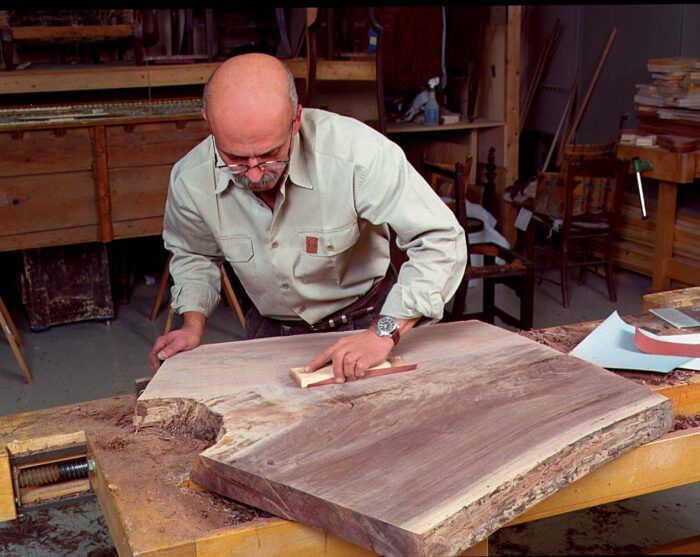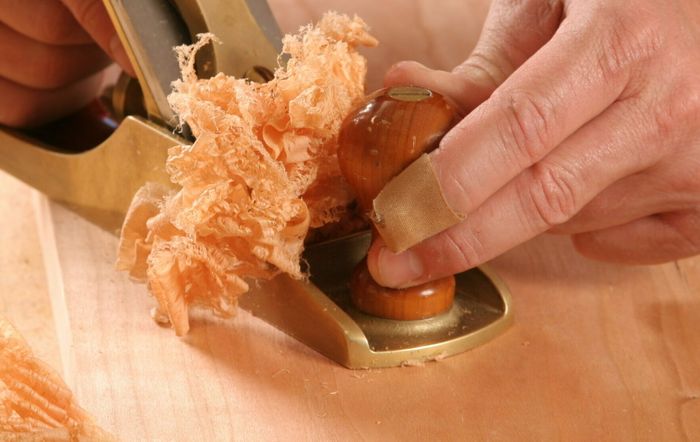Planing Difficult Grain
With a well-tuned plane and the right approach, tackling tricky figure doesn't mean sanding all day.

Beautiful wood is often difficult to tame. There’s a way to do so using planes and sanders, and Mario Rodriguez explains how in this article. The first step is choosing the correct plane and making sure it’s tuned properly. The rest is in your technique. He describes how to plane with the grain and shows how to plane if the grain changes. He shows how to use a scraper to repair any damage and when to move on to sanding. A large photo of a difficult board to plane with no fewer than six problem areas shows how Rodriguez addresses each issue. He also offers advice on premium-grade smoothing planes.
In the course of building furniture, most of your material will have nice,straight, uninspiring grain that’s easy to look at and easy to plane. And most of the time you’re grateful for its tame nature.But the wood that makes your heart race and your palms sweat is the stuff with swirling iridescent figure; a blistering surface that seems to be alive and filled with light. That’s the kind of wood that can transform a mundane little nightstand into a minor masterpiece.
If your previous attempts at taming these stubborn surfaces with a bench plane produced only a swath of tearout, you probably resigned yourself to sanding. Well,don’t pull out the belt sander yet. There is a better way. With a handplane you can save time, energy and a cloud of dust. And it’s not as hard as you might think.
Most woodworkers express some disbelief when I claim that by practicing good technique and employing a small selection of planes and scrapers, I virtually eliminate sanding—or at least reduce the unpleasant task by as much as 80%—no matter how figured the wood might be. Instead of starting my sanding routine at 80 grit and tediously advancing to 320, I begin at 180 or 220 grit.
When I work highly figured wood, my objective is not to surface the material completely using a handplane and avoid sanding altogether. Realistically, I employ handplanes and scrapers right up to the final stages of surface preparation and then resort to sandpaper to remove any minor tearout and light plane tracks. Using this method, I’m able to achieve a uniformly smooth surface, ready for finishing.
To be successful with this approach, it’s important to have a well-tuned plane (conditioned sole, fitted chipbreaker and easily adjustable) with a well-prepared blade(sharp, properly beveled and ground square). You also need to practice good technique (stance, grip and stroke), even when faced with some wild figure. With this approach, sanding shouldn’t take long at all.
From Fine Woodworking #144
Fine Woodworking Recommended Products

AnchorSeal Log and Lumber End-Grain Sealer

Festool DF 500 Q-Set Domino Joiner

Stanley Powerlock 16-ft. tape measure








Log in or create an account to post a comment.
Sign up Log in